
 |
Tea Clipper |
 |
| from TeaAntiques.com | ||
| Edition One Hundred and Nine |
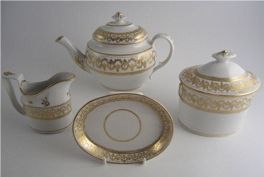 A
A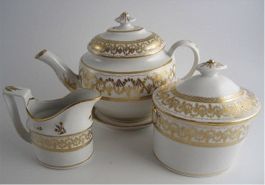 beautiful 'John Rose' Coalport part teaset comprising teapot
and stand, sucrier and cover and milk jug with exquisite gilt decoration, c1800.
This charming teaset has the provenance of coming from Grimblethorpe Hall, near
Louth, Lincolnshire. It then came by descent through the Nicholson family and
then sold from the estate of Miss Nicholson, Bedford. It is believed that the
teapot, milk jug and sucrier remained in excellent condition as they were
probably not used, the rest of the tea service was used with a silver teapot,
milk jug and sugar bowl instead. It is wonderful to have such a history
associated with such a beautiful item.
beautiful 'John Rose' Coalport part teaset comprising teapot
and stand, sucrier and cover and milk jug with exquisite gilt decoration, c1800.
This charming teaset has the provenance of coming from Grimblethorpe Hall, near
Louth, Lincolnshire. It then came by descent through the Nicholson family and
then sold from the estate of Miss Nicholson, Bedford. It is believed that the
teapot, milk jug and sucrier remained in excellent condition as they were
probably not used, the rest of the tea service was used with a silver teapot,
milk jug and sugar bowl instead. It is wonderful to have such a history
associated with such a beautiful item.
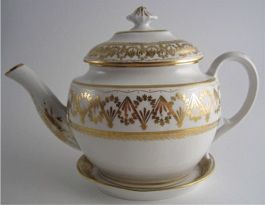
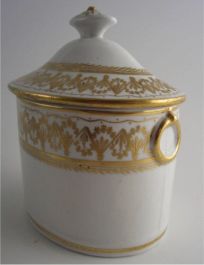
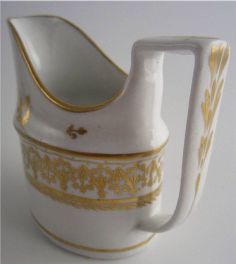
More details of this item and other tea related antiques can be found by visiting my web site at www.TeaAntiques.com.
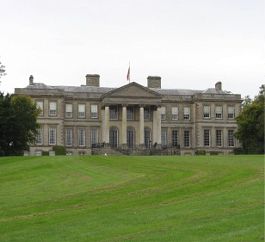
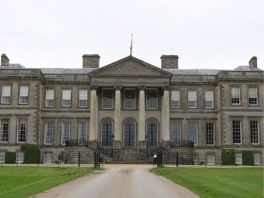 A most impressive Palladian house in the Warwickshire countryside is the home of
the Marquess and Marchioness of Hertford, Ragley Hall. This beautiful house was
started in 1680 to the design of Robert Hooke. It was not completed and lived in
though until the mid Eighteenth century. There are possibly a few reasons why it
took so long to complete; it may have been due to the fact that the family also
had other estates in Wales and Ireland or that there may have been a shortage of
money at that time. Whatever the reason, once competed, fully decorated and
furnished Ragley was certainly a house too impress.
A most impressive Palladian house in the Warwickshire countryside is the home of
the Marquess and Marchioness of Hertford, Ragley Hall. This beautiful house was
started in 1680 to the design of Robert Hooke. It was not completed and lived in
though until the mid Eighteenth century. There are possibly a few reasons why it
took so long to complete; it may have been due to the fact that the family also
had other estates in Wales and Ireland or that there may have been a shortage of
money at that time. Whatever the reason, once competed, fully decorated and
furnished Ragley was certainly a house too impress.
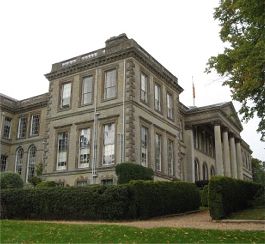
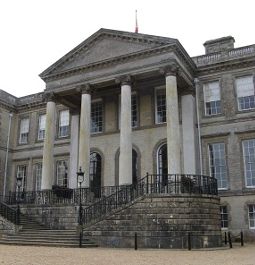
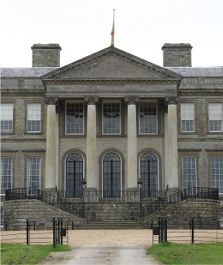
Francis Seymour, a distant relation of Jane Seymour, wife of King Henry VIII and mother of King Edward VI, inherited Ragley and was created Baron Conway by Queen Anne. The house has remained in the Seymour family through many generations.
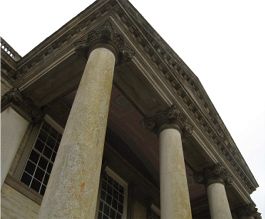
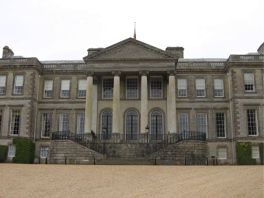 The house is approached from the East Front. A fine stone façade with central
portico and two projecting side wings greets visitors. The central portico,
added by James Wyatt, has a double sweeping set of steps leading up to the piano nobile. Above a large triangular pediment supported by four giant order Ionic
columns. An open balustrade runs around the roof line of the house helping to
hide the roof itself.
The house is approached from the East Front. A fine stone façade with central
portico and two projecting side wings greets visitors. The central portico,
added by James Wyatt, has a double sweeping set of steps leading up to the piano nobile. Above a large triangular pediment supported by four giant order Ionic
columns. An open balustrade runs around the roof line of the house helping to
hide the roof itself.
A set of three arched glazed windows at the back of the portico, the central one being the doorway into the house and into the impressive Great Hall.
The Great Hall is a masterpiece; with exquisite Baroque decoration was designed by James Gibbs in 1750. Rising up two floors allowing light to flood in, it creates a large and airy space. The walls are of the Hall are covered in fine plaster decoration and is decorated in soft pink and white. Within the fine plaster ceiling is a central medallion depicting Minerva riding the clouds in her horse drawn chariot. Over the fireplace are symbols of war and peace. The lower level of the Hall has pairs of plaster pilasters supporting an elaborate frieze, above which are vaulted arches to the ceiling, in these arches are housed alternately, busts and vases. The Hall is 70 feet long, by 40 feet wide and 40 feet high. The furniture within the Hall, including large wooden settees painted with the family crest, were made for the Hall in 1756. This Hall is often used for concerts and functions and is an ideal space for them.
Leading off of the Hall is a suite of magnificent rooms, the first being the Music Room. This, like the Hall, has some beautiful fine plaster decoration and the walls and ceiling are painted in a symphony of pale and pastel blues with white to highlight the plasterwork. This room, before being a Music Room, was a Billiard room during the nineteenth century and prior to that was a private sitting room to a bedroom in the corner of the house. In the Eighteenth century the house was designed with each corner of the house having a bedroom with its own private sitting room. This layout of rooms has now changed with the most bedrooms now housed on the second floor.
Before entering the main Dining Room, there is a pretty little red Breakfast Room. Apart from a beautifully carved fireplace made from Pear wood in 1756, there stands in the centre of the room a very elegant oval breakfast table on a central column with four very slender legs. A set of Regency black and partially gilded chairs with rich red upholstery accompany the table.
The main Dining Room of the house has been redecorated in the 1970s, previous to that it was in a bit of a state following its use as a recreation room for patients when the house was used as a hospital during the war. Now it is once again used by the family for large dinner parties and birthday dinners. The dining table, covered in two white table cloths – needed to span the size of the table, is laid with a wealth of elegant silver and silver gilt wares. Around the table are a set of 24 William IV chairs with the original padded leather upholstery.
Of the many large portraits on the walls of the Dining Room, is one of Prince George, the Prince Regent to King George III. It is significant that his portrait is hung in this house as he had quite an association with the house and family. Indeed, he was staying here in The Prince Regent's Bedroom, when he was woken to be told that his only child, Princess Charlotte had tragically died.
Two of the rooms that still retain much of James Wyatt’s decoration are The Mauve Drawing Room and The Red Saloon. The Mauve Drawing Room has the original Wyatt ceiling dating from 1780, but the room was repainted in 1981.
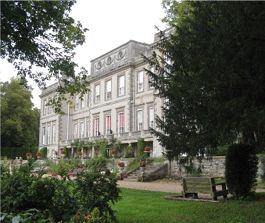
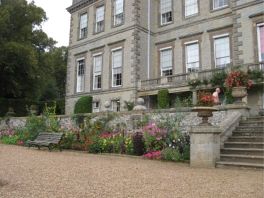
The Red Saloon remains exactly how Wyatt designed it in 1780. The rich red damask on the walls and original Louis XVI furniture has been renewed twice, but retained the original pattern and colour. A magnificent crystal glass chandelier hangs from the elegantly plastered and decorated ceiling. Upon a side table is a collection of Sèvres porcelain.
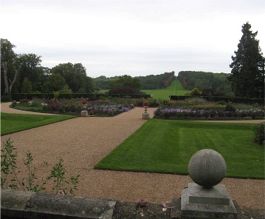
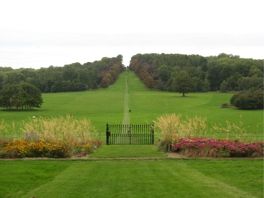 The Green Drawing room was the current Marquis's father’s favourite rooms,
and I can see why. It is a restful room, light and comfortably furnished with a
balcony over looking the gardens. Amongst the furniture are some delicate French
and English Eighteenth century pieces and on the walls some delightful Chinese
Chippendale mirrors.
The Green Drawing room was the current Marquis's father’s favourite rooms,
and I can see why. It is a restful room, light and comfortably furnished with a
balcony over looking the gardens. Amongst the furniture are some delicate French
and English Eighteenth century pieces and on the walls some delightful Chinese
Chippendale mirrors.
The Prince Regent’s Bedroom contains the original Prince Regent's bed. This four-poster bed is quite magnificent, with floral silk hangings from the 17th century and reused, the bed surmounted with the Prince of Wales feather plumes. This bed was built for the first visit of the Prince to Ragley in 1796. Over the fireplace hangs a portrait of the Prince Regent by Lawrence.
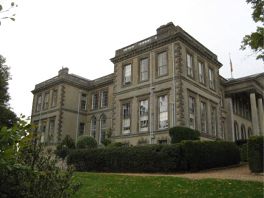 In the South Staircase Hall,
the walls and ceiling are painted with a beautiful
mural, the work of Graham Rust. Started in 1969, it took 14 years to complete.
Called ‘The Temptation’, the ceiling depicts the Mount of Temptation with the
Devil offering Christ the world with all its riches. The walls are painted with
a balcony on which can be seen members of the family and their pets from the
time of the painting.
In the South Staircase Hall,
the walls and ceiling are painted with a beautiful
mural, the work of Graham Rust. Started in 1969, it took 14 years to complete.
Called ‘The Temptation’, the ceiling depicts the Mount of Temptation with the
Devil offering Christ the world with all its riches. The walls are painted with
a balcony on which can be seen members of the family and their pets from the
time of the painting.
Finally, we come to the Library. This room was formally the chapel within the house, but was later converted into the Library. This comfortable and warm room is now the main living room used by the present Marquess and his family. This room commands wonderful views over the lake and Cotswold Hills beyond. Hanging above the fireplace is a delightful portrait of Horace Walpole, promoter of Gothic Style, as demonstrated by his house, Strawberry Hill, Walpole’s London home. The reason for the portrait of Walpole to be hanging in this house was that he was a cousin of the 1st Marquess of Hertford and as such, often stayed here.
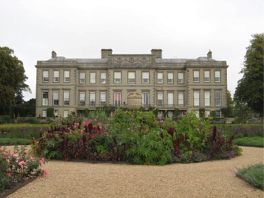
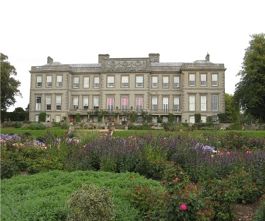
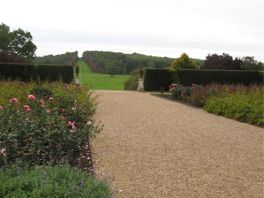
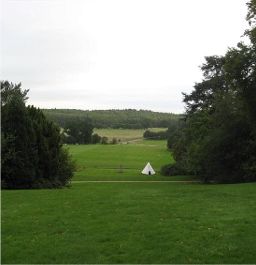
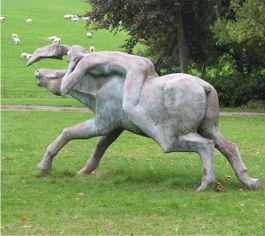 The 400 acres of parkland surrounding the house were landscaped by
‘Capability’ Brown in the Eighteenth century. Later in 1873, garden designer
Robert Marnock created a formal garden in which to display the many new plants
that were being discovered in the New World. The essential design elements of
Marnock’s garden still survive and are now restored but using more indigenous
planting. One of the most prominent parts of Marnock’s garden was the large
circular rose garden below the terrace of the West Front of the house. With its
cross-intersecting paths the four borders are planted in swathes of colours,
predominantly shades of blue. Other features in the gardens are a Fumpary, using
old tree stumps as a back drop to woodland plants, bulbs and ferns; Mixed Border
for summer colour; Winter Garden for winter colour and interest; Spring Garden
and Meadow Garden. For the more energetic, there are also Woodland walks to be
enjoyed. As you enjoy a walk round the gardens and walks, look out for the many
interesting and varied sculptures that adorn the gardens. These sculptures by
various artists, including Antony Gormley and Lynn Chadwick, range in style from
shapely benches, humanistic statues to the rather bizarre!
The 400 acres of parkland surrounding the house were landscaped by
‘Capability’ Brown in the Eighteenth century. Later in 1873, garden designer
Robert Marnock created a formal garden in which to display the many new plants
that were being discovered in the New World. The essential design elements of
Marnock’s garden still survive and are now restored but using more indigenous
planting. One of the most prominent parts of Marnock’s garden was the large
circular rose garden below the terrace of the West Front of the house. With its
cross-intersecting paths the four borders are planted in swathes of colours,
predominantly shades of blue. Other features in the gardens are a Fumpary, using
old tree stumps as a back drop to woodland plants, bulbs and ferns; Mixed Border
for summer colour; Winter Garden for winter colour and interest; Spring Garden
and Meadow Garden. For the more energetic, there are also Woodland walks to be
enjoyed. As you enjoy a walk round the gardens and walks, look out for the many
interesting and varied sculptures that adorn the gardens. These sculptures by
various artists, including Antony Gormley and Lynn Chadwick, range in style from
shapely benches, humanistic statues to the rather bizarre!
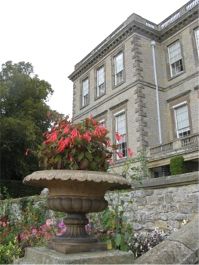
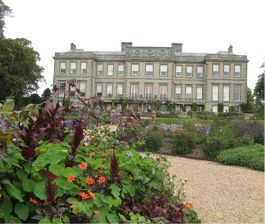
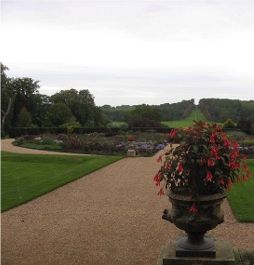
To round off a visit to Ragely, you may enjoy afternoon tea in the restaurant in the basement of the house, or take your tea outside on the West Terrace. My choice was a slice of light and moist lemon butter cream sponge cake. Tea and cake, a delightful way in which to conclude an enjoyable visit to Ragley.
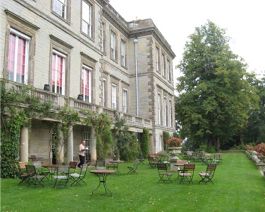
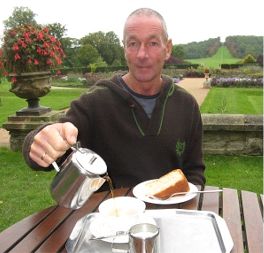
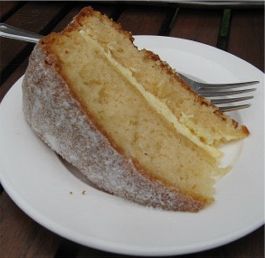
Ragley Hall
Alcester,
Warwickshire,
B49 5NJ
www.ragleyhall.com
Tel: +44 (0) 1789 762090
To review past newsletters, just follow this link:
Past newsletters.
To subscribe to this free newsletter -
Click here